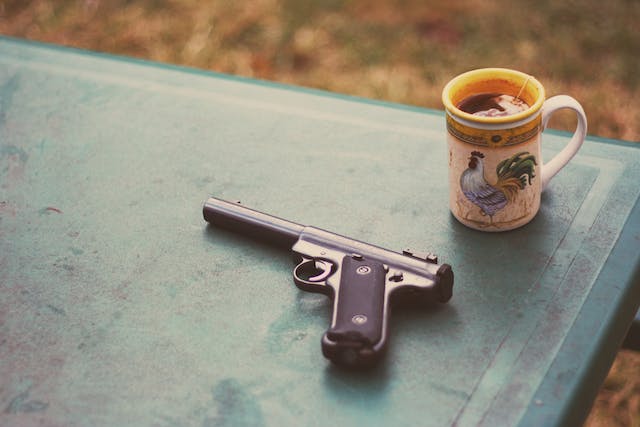With the increasing number of first-time gun owners, understanding the responsibilities of gun ownership has never been more important. In many places, like the United States, the legal framework allows for permitless concealed carry for individuals 21 years and older who are legally permitted to carry a firearm. Gun ownership rates have also increased. For instance, Florida has a gun ownership rate of 28.8%, placing it at the forty-first position nationally in terms of the percentage of gun ownership. This growing trend underscores the necessity for new gun owners to be well-informed about not only the legal aspects of gun ownership but also the crucial safety protocols. Handling a firearm is a serious responsibility, and first-time owners must be diligent in educating themselves about safe and responsible gun use.
This article aims to guide new gun owners through six essential safety and usage tips, helping them navigate their new responsibilities effectively.
-
Prioritize Safety Training
Safety training should be a top priority for all first-time gun owners. Owning and operating a firearm safely requires knowledge and skill that can only be acquired through proper training. Safety courses cover essential topics such as the safe handling of firearms, understanding basic gun mechanics, proper storage practices, and the fundamentals of shooting.
These courses not only teach practical skills but also instill a mindset of safety and responsibility. Many also cover the legal aspects of gun ownership, such as understanding local gun laws and regulations. By completing a comprehensive safety training course, new gun owners can significantly reduce the risks associated with firearms
-
Understanding Legal Reciprocity
For first-time gun owners, especially those interested in concealed carry, understanding legal reciprocity is crucial. Laws regarding concealed carry can vary significantly from state to state in the U.S. As an example, the Florida Concealed Carry Reciprocity Map illustrates how Florida’s concealed carry permits are recognized in various other states. This concept of reciprocity means that some states recognize concealed carry permits issued by other states while others do not.
New gun owners need to familiarize themselves with the reciprocity agreements that pertain to their state’s permit. This knowledge is crucial when traveling across state lines, as failure to comply with local laws can lead to legal consequences. Gun owners should regularly consult updated resources like the reciprocity map to stay informed about where their permits are valid, ensuring they remain within the law at all times.
-
Proper Storage of Firearms
Proper storage of firearms is critical for ensuring safety, particularly in homes with children or other unauthorized individuals. Safe storage prevents accidents and unauthorized access, a responsibility that all gun owners must take seriously. There are several effective methods for securing firearms, including gun safes, locking cabinets, and trigger locks.
Gun safes are a popular option, offering secure storage and, in many cases, protection against fire and theft. Locking cabinets provide a similar level of security but are often more accessible, making them a good choice for those who need regular access to their firearms. Trigger locks, which prevent the gun from being fired, are an additional safety measure that can be used in conjunction with other storage methods.
When storing a firearm, it’s also essential to ensure that it is unloaded and, if possible, store the ammunition separately. This practice adds an extra layer of security and is particularly important in households with children. Educating all family members about gun safety and the importance of not tampering with stored firearms is also crucial for preventing accidents.
-
Regular Maintenance and Care
Maintaining and caring for a firearm is essential for ensuring its safe and effective operation. Regular maintenance of a gun includes cleaning, inspecting, and properly storing the firearm. First-time gun owners should familiarize themselves with the specific maintenance requirements of their particular model.
The process of cleaning a gun involves disassembling it (as per the manufacturer’s instructions), cleaning each part to remove dirt, residue, and moisture, and then lubricating it to prevent rust and ensure smooth operation. This routine not only prolongs the life of the firearm but also provides an opportunity for the owner to inspect it for any signs of wear or damage. Identifying and addressing issues on time can prevent malfunctions that could lead to accidents.
Additionally, proper care includes understanding and adhering to the recommended storage conditions for the firearm. Extreme temperatures and humidity can damage a gun over time, so storing it in a controlled environment is advisable.
-
Practice Regularly at a Shooting Range
Regular practice is crucial for first-time gun owners. It helps in building proficiency, confidence, and muscle memory, which are vital for safe gun handling. Practicing at a shooting range offers a controlled and safe environment for learning and improving shooting skills. It also provides an opportunity to become more familiar with the firearm’s performance, including its trigger pull, recoil, and accuracy.
At the shooting range, new gun owners can practice various shooting positions and techniques, learn how to aim and shoot accurately and understand how to handle the firearm safely under different scenarios. Many shooting ranges also offer professional instruction, which can be extremely beneficial for beginners.
Consistent practice helps in developing a responsible mindset towards gun ownership. It reinforces the importance of safety and precision, making the owner more prepared and confident in handling their firearm, whether for sport, self-defense, or other purposes.
-
Stay Informed About Gun Laws and Regulations
Staying informed about gun laws and regulations is an ongoing responsibility for all gun owners. Gun laws can vary greatly depending on the location and can change over time. First-time gun owners should make a concerted effort to stay updated on local, state, and federal firearm laws.
This includes understanding the legal requirements for gun ownership, restrictions on certain types of firearms, rules regarding concealed or open carry, and regulations about transporting firearms. Being knowledgeable about these laws helps in ensuring compliance and avoiding legal issues.
In addition to understanding the law, it’s also important to stay informed about best practices and any changes in the broader context of gun safety and ownership. This could involve joining local or national gun owner groups, participating in forums, or subscribing to relevant publications. Staying connected with the gun owner community can provide valuable insights, updates, and support.
Conclusion
For first-time gun owners, embarking on the journey of responsible firearm ownership involves much more than just purchasing a gun. It requires a commitment to continuous learning and adherence to safety practices. From understanding legal reciprocity and prioritizing safety training to ensuring proper storage, regular maintenance, consistent practice, and staying informed about laws, these tips provide a foundational guide for safe and responsible gun ownership. By embracing these practices, new gun owners can ensure they handle their firearms with the utmost responsibility and respect, contributing to their safety and that of those around them.










